What is coffee?
The easiest answer is a brewed drink coming from roasted coffee beans, which are seeds that came from a seed of a cherry-berry like plant known as the coffea species. There are thousands of species of trees and shrubs of the coffea genus but no more than 100 coffee plants. The most important species to the coffee industry are of the “Arabica “and “Robusta” variety.
Arabica vs. Robusta
Robusta coffee is mostly grown in West Africa, Vietnam, Indonesia, and Brazil. As we discussed in our flavored coffee and coffee blend blog, the Robusta species is used more in this field. It’s considered a less expensive coffee bean and lower grade coffee. In the coffee roaster industry we use Robusta as a filler to save money or with espresso blends. At Banyan Coffee we do not use any Robusta coffee beans as a money-saving filler. We specialize in the specialty coffee and single origin coffee. Robusta coffee isn’t considered specialty coffee due to its lack of complexity and flavor. Rather, it is used for instant coffee and a budget-friendly coffee to a consumer. On a positive note, Robusta tends to have more caffeine than Arabica by nearly a 2:1 ratio. Robusta coffee beans should only be blended to give extra “crema” to your espresso shot if blended correctly with the majority coffee beans being Arabica beans. “If you’re searching for a caffeine kick and you can handle the taste of burnt tires on your tongue then drink it,” a coffee roaster once told me. It generally has a bitter, rubbery/grain flavor with a peanut aftertaste. Robusta coffee is also highly regarded for being resilient. It grows much easier because it can ward off diseases and insects. It yields more coffee than Arabica beans too. Robusta requires cross-pollinating unlike Arabica beans, which are self-pollinating. In general, Robust crops grow in much lower elevation than the Arabica beans and can withstand hot temperatures and full sun. Robusta beans will take on more water therefore thrives in monsoon climates. Surprisingly, Vietnam is the largest producer of Robusta coffee beans, and the second largest producer of all coffee beans in the world after Brazil. As a coffee consumer you must check the label to see if the coffee bag reads “100% Arabica Coffee.” If not, then you might be getting some Robusta coffee mixed in your roasted coffee beans.
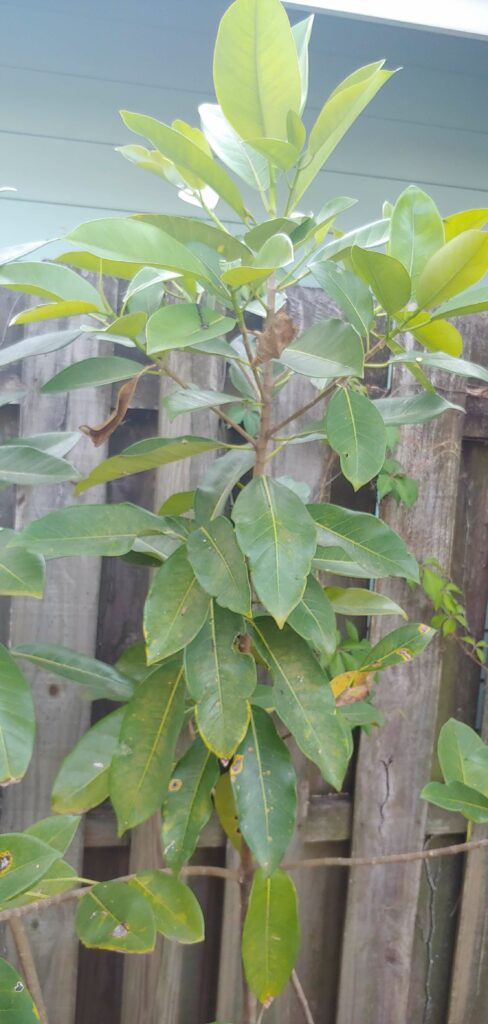
Arabica Coffee is more desirable coffee than Robusta. It’s considered more complex and has more flavorful profiles. They will fetch more in price because they are a higher quality coffee bean. Arabica Coffee originated in Ethiopia where there’s thousands of varieties. “Ethiopia Heirloom” Arabica varieties is a common label you’ll see, and these are constantly being discovered in the Ethiopian region. Our Ethiopia Idido coffee is a heirloom variety. In fact each village or town could have their very own variety of coffee seed. Arabica coffee will cross breed with other coffee plants to create hybrids. A famous hybrid is the “Hybrid of Timor” or “Tim Tim” by the locals on the island of Timor, Indonesia. This is where Robusta and Arabica coffee beans cross-bred. It’s not a common variety in the Indonesia coffee industry but it’s hybrid cousin the Catimor variety (marriage of Timor Hybrid & Caturra Variety) is more common to see.
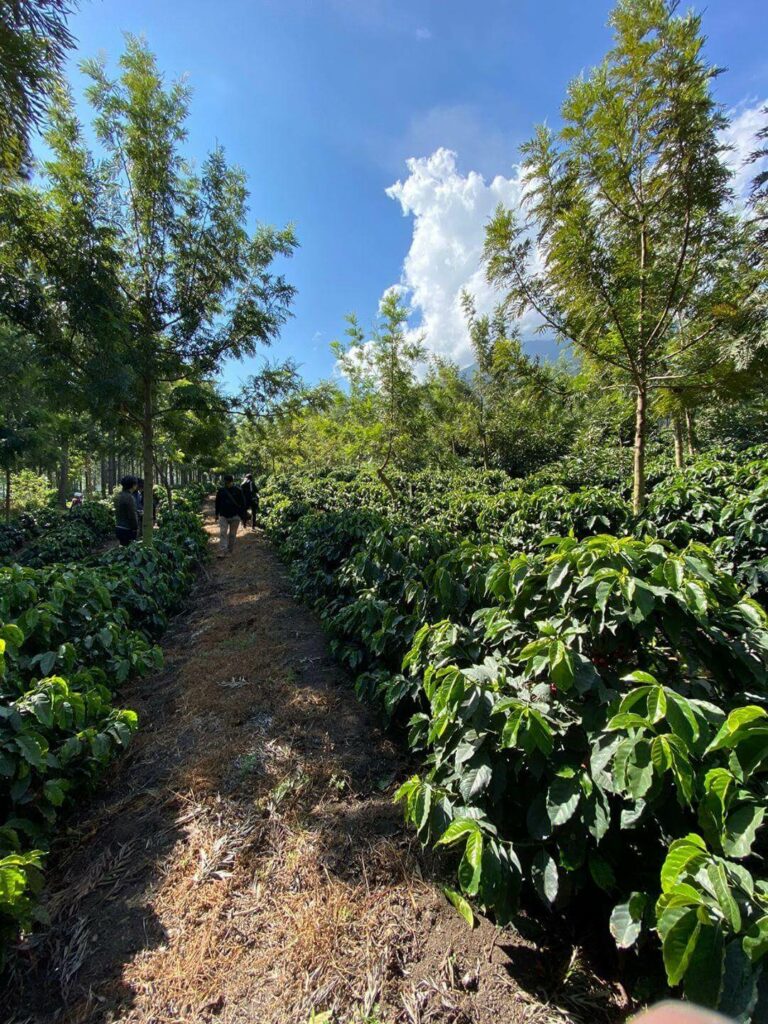
We won’t get into too many varietal beans now because the list could be endless, but we will touch on a few that Banyan Coffee Co. really enjoys and carries.
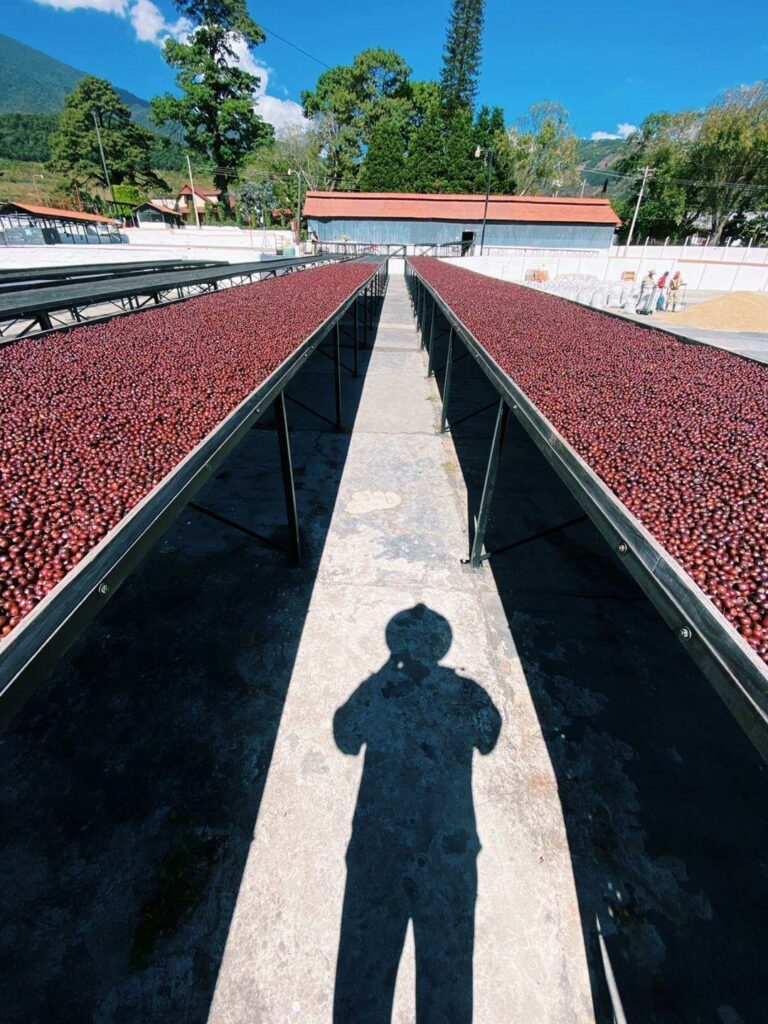
-Pacamara varietal is one of the largest coffee beans and one of my favorites. Pacamara is mostly found in Central America especially in El Salvador. We will be carrying a Guatemala coffee that has the Pacamara varietal. It comes from a hybrid of Maragogype and Pacas beans.
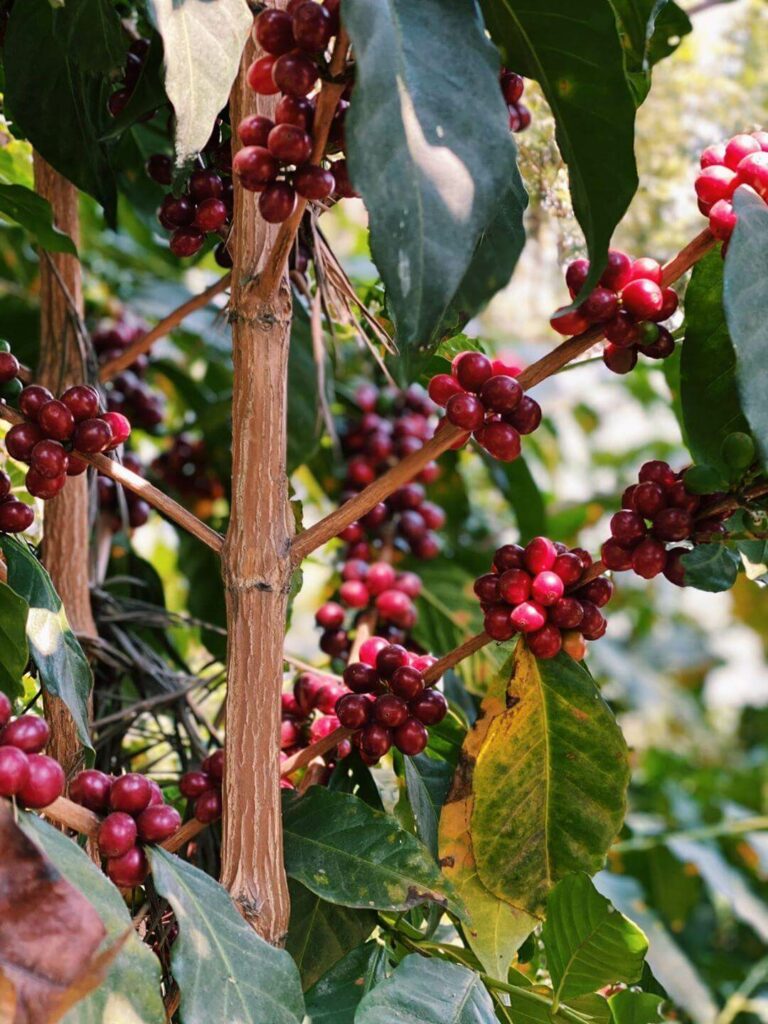
-Geisha coffee is considered the pinnacle of coffee varieties to specialty coffee roasters. This variety is known for crushing price records and coffee tasting competitions. We try to carry this coffee from time to time, but the cost of this coffee bean isn’t reasonable to the consumer. Some times these coffees can cost $20 lb. or more.
-The Catimor variety as we mentioned earlier is a hybrid of Timor and Caturra. Being both Arabica and Robusta coffee beans, it is popular for farmers for hardiness to fight off insects. This ensures the farmers will have a more promising crop. Our Sumatra carries some Catimor seeds but is not limited to it.
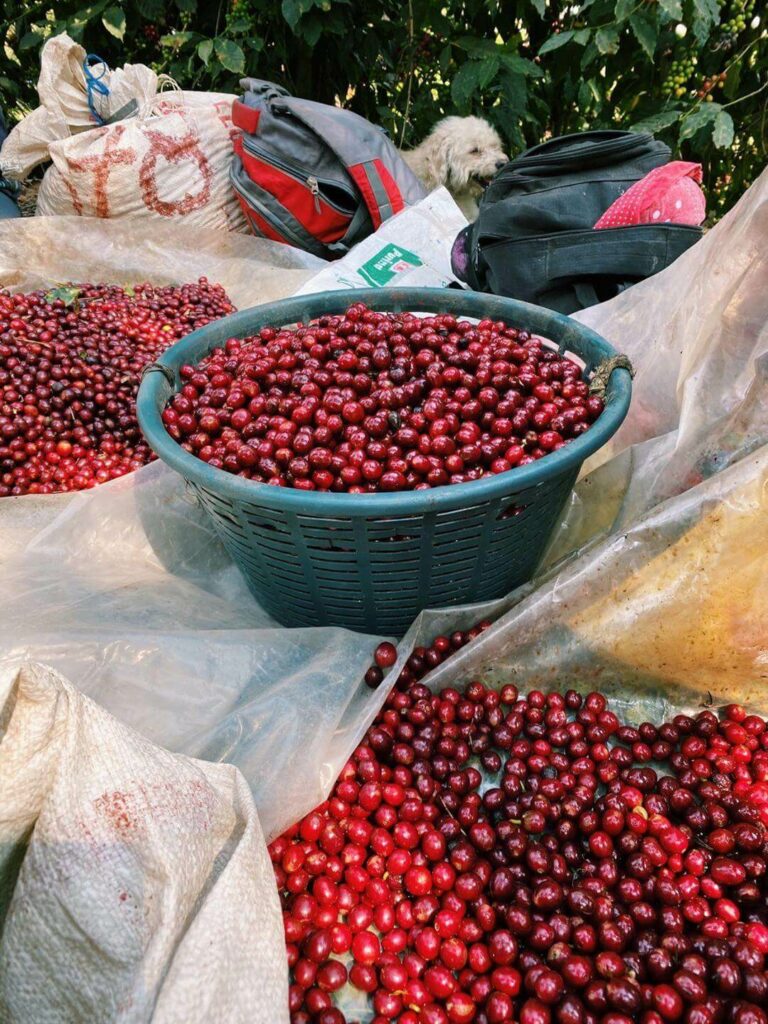
-Bourbon gets its name from the island of Bourbon (off the coast of east Africa). Bourbon can’t be said without mentioning the Typica variety because it mutated from the Typica plant. Bourbon is more common due to its yielding crop. The plants were eventually planted in Central and South America. Another difference is that Typica tends to be less complex and less sweet than the Bourbon variety. You can find our Guatemala coffee and Honduras coffee carrying Bourbon. Our Sumatra and Java fall under the Typica variety as well.
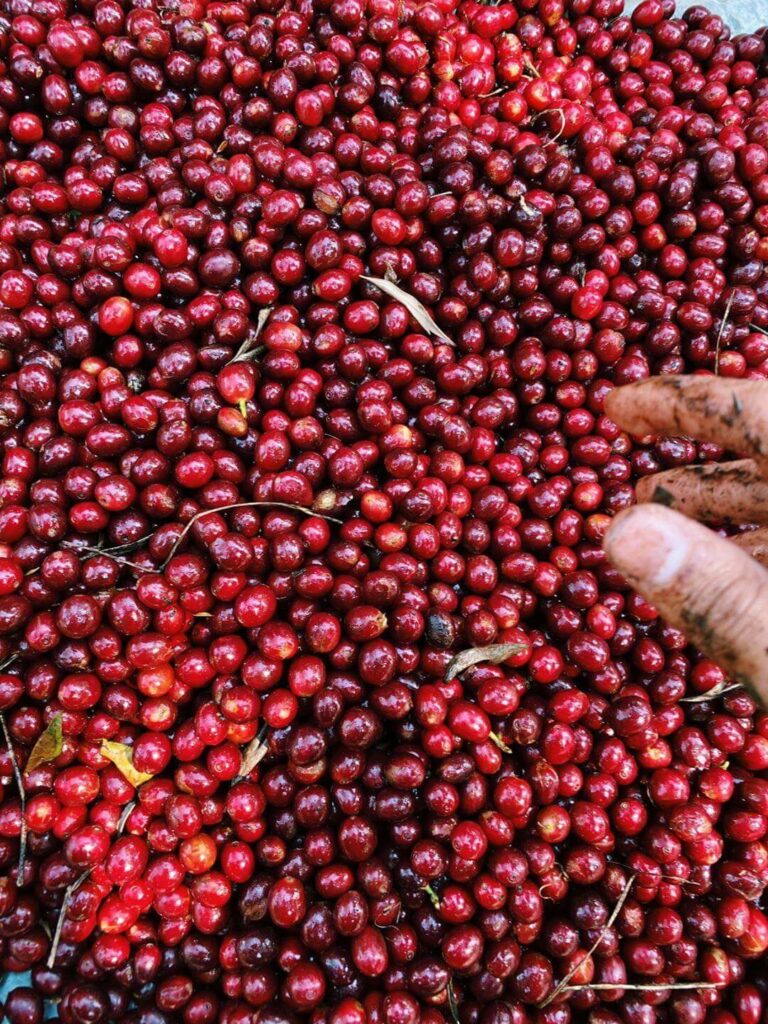
-Caturra is very popular with farmers because of its production for coffee cherries. Since Bourbon is such a great producing crop, the Caturra variety mutated from the Bourbon and created a much greater yielding coffee bean.
Structure of coffee
Coffee beans are the seeds of a cherry-like plant. Just as a cherry seed in a cherry or a plum seed inside a plum. As the cherry ripens it turns from a green color to red color. As it progresses to ripen, the coffee can change from a yellow to orange and finally to a red color. This process is no different when you check your fruit at the grocery store or harvest in your backyard garden. The more ripe, the more sweet your fruit and the same applies to coffee beans. In another blog we will discuss elements that change the flavor in coffee as there is too much information to discuss here.
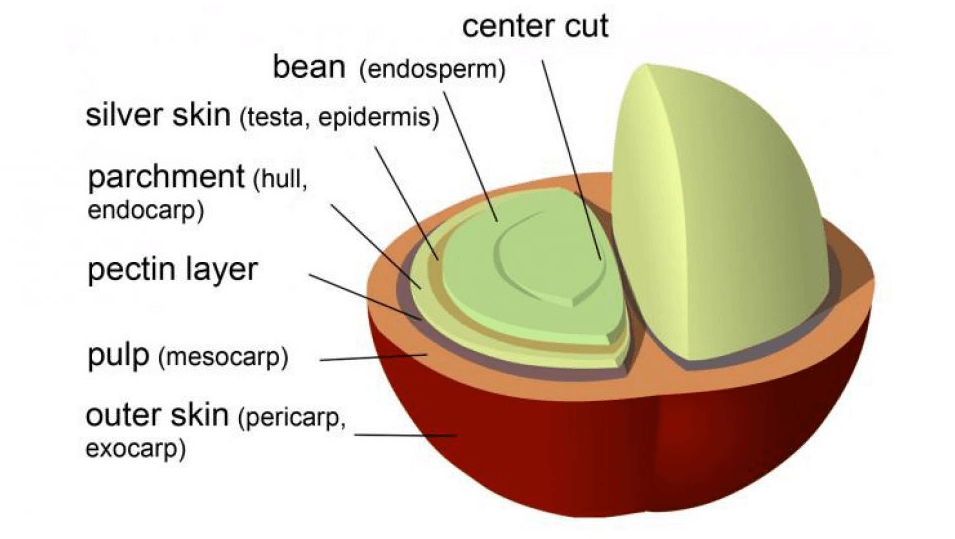
The anatomy of a coffee cherry from the bean inside to the outside consist of the bean (endosperm), silver skin (testa, epidermis), parchment (hull, endocarp), pectin layer, pulp (mesocarp), and outer skin (pericarp, exocarp). Most of the time inside the coffee cherry there are two seeds (or two coffee beans). Sometimes there can be one coffee bean and this is called a “peaberry.” These peaberry coffee seeds can be sweeter in flavor than the two-seed coffee beans. The silver skin is well known as the chaff to a coffee roaster. It’s the last protective layer on the seed. During the last phase of coffee roasting the chaff will fall off the coffee bean though in light roasts you may discover some chaff still on the coffee bean. Don’t be confused, but the parchment is the innermost layer from the cherry portion. It has several cell layers that protect the silver skin and coffee bean. The parchment will determine the size of the coffee bean by its hardening process as it matures. The pectin layer connects the parchment to the pulp or mucilage. The mucilage (pulp) is the sticky, but sugary substance that contains enzymes. The “Honey Process” gets its name from when you have the mucilage still intact to the coffee bean. The outer skin is very similar to a cherry skin. Most of the time it is removed during harvest season and can be used as a drink that resembles a tea.
If you want more information in regards to coffee varieties please email us at Banyancoffeeroasters@gmail.com or be sure to follow us on Instagram and Facebook to stay up to date on Coffee. As your Bradenton coffee roaster, we try to educate you on specialty coffee. Thanks for reading!
